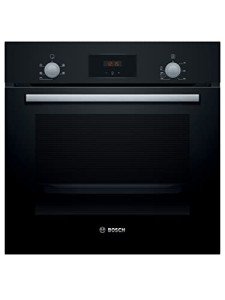This Story Behind Inbuilt Kitchen Appliances Will Haunt You Forever!
Inbuilt Kitchen Appliances: Revolutionizing Modern Culinary Spaces
Recently, the trend of incorporating inbuilt kitchen appliances into home styles has gathered substantial appeal. Homeowners and designers alike acknowledge that these integrated appliances not just boost the aesthetic worth of kitchen areas however likewise enhance performance and space performance. This post explores the different types of inbuilt kitchen appliances, their benefits, factors to consider for installation, and upkeep tips to assist property owners make informed choices.
What Are Inbuilt Kitchen Appliances?
Inbuilt kitchen appliances, likewise known as built-in appliances, are created to fit effortlessly into kitchen cabinetry and counter tops, producing a structured and cohesive appearance within the kitchen. Unlike freestanding designs, inbuilt appliances provide the advantage of taking full advantage of space while mixing harmoniously with the total design.
Kinds Of Inbuilt Kitchen Appliances
Inbuilt kitchen appliances been available in numerous types, each serving a distinct function. Below is a categorized list of typical inbuilt kitchen appliances:
Cooking Appliances
- Ovens: Built-in ovens provide a smooth appearance and can be installed at eye level to assist in easy access.
- Cooktops: These can be gas or electric and are integrated into counter tops, permitting different setups.
- Steam Ovens: Gaining traction in modern kitchens, these ovens utilize steam to prepare food while maintaining nutrients.
Refrigeration Appliances
- Fridges: Inbuilt fridges fit seamlessly into kitchen cabinetry, keeping a consistent look throughout the kitchen.
- Red wine Coolers: Designed for the white wine enthusiast, these appliances maintain optimum temperatures for red wine storage.
Dishwashing Appliances
- Dishwashers: Inbuilt dishwashing machines are put below counter tops and can be camouflaged with kitchen cabinetry for a streamlined look.
Miscellaneous Appliances
- Microwaves: Built-in microwaves can be put in a designated cabinet for simple access while saving counter top space.
- Coffee Machines: These appliances can be naturally integrated into cabinets, delivering top quality coffee while enhancing kitchen sophistication.
Advantages of Inbuilt Kitchen Appliances
Inbuilt kitchen appliances use many benefits, making them an appealing option for remodels or new builds. Here are some of the most substantial benefits:
Aesthetic Appeal: By providing a smooth surface, inbuilt appliances add to a modern-day and sophisticated kitchen style.
Area Optimization: These appliances often make use of less area than freestanding models, making them ideal for smaller cooking areas.
Improved Functionality: Built-in appliances can enhance workflow and improve cooking routines.
Increased Property Value: High-quality inbuilt appliances can make a home more attractive to potential purchasers, ultimately increasing residential or commercial property value.
Personalization: Homeowners have the alternative to pick appliances that fit their specific requirements and choices.
Table: Comparison of Inbuilt vs. Freestanding Appliances
Feature
Inbuilt Appliances
Freestanding Appliances
Aesthetic Integration
Smooth cabinet combination
Stand-alone design
Area Efficiency
Enhances kitchen space
Needs additional space
Personalization
Customized designs readily available
Restricted customization
Flexibility
Very little versatility
More choices and availability
Expense
Generally greater
Normally lower
Considerations for Installation
While inbuilt kitchen appliances offer a number of advantages, there are very important considerations to bear in mind throughout setup:
Measurement: Accurate measurements are important to ensure a perfect fit within existing cabinetry.
Ventilation: Adequate ventilation is important for appliances like ovens and dishwashing machines to function efficiently.
Power and Water Supply: Access to electrical outlets and plumbing should be represented during setup to make sure appliances run correctly.
Expert Installation: Hiring specialists might be beneficial to avoid pricey errors and ensure appropriate fitting.
Upkeep Tips for Inbuilt Kitchen Appliances
To extend the life expectancy of inbuilt kitchen appliances and keep them operating efficiently, regular upkeep is necessary. Here are some tips for upkeep:
Regular Cleaning: Clean surfaces regularly to prevent dirt accumulation and preserve the appearance of appliances.
Expert Servicing: Schedule periodic professional maintenance to deal with any potential concerns and keep effectiveness.
Follow Manufacturer Guidelines: Adhere to the manufacturer's upkeep and operational guidelines to take full advantage of home appliance durability.
Look for Wear and Tear: Regularly check appliances for any signs of wear and without delay resolve any possible issues to prevent additional damage.
FAQs About Inbuilt Kitchen Appliances
1. What is the main advantage of selecting inbuilt appliances over freestanding ones?The primary benefit lies in their capability to provide a streamlined and cohesive look while optimizing kitchen area. 2. Are inbuilt appliances more expensive than freestanding ones?Inbuilt appliances typically include a greater cost tag due to
the personalization and combination involved; however, this can vary by maker and model. 3. Can I change my freestanding appliances with inbuilt ones?Yes, but it's vital to determine the space precisely and consider setup requirements before making a switch. 4. How do I determine the ideal size inbuilt appliances for my kitchen?Consulting with kitchen design specialists or utilizing space preparation
tools can assist in choosing the suitable size for your inbuilt
appliances. Inbuilt kitchen appliances represent a mix of functionality, style, and performance, making them a favored choice for contemporary homes.
Whether it is achieving a sleek style or making the most of space, the advantages of integrated appliances are many. By thoroughly considering built in double gas oven and hob packages of inbuilt appliances, setup requirements, and upkeep, homeowners can produce beautiful and practical kitchen areas that stand the test of time. As kitchens work as the heart of the home, investing in the right appliances can pay substantial dividends in the long run. 